Men's suits in the 1950s represent a fascinating fusion of style and practicality. You'd see gray flannel suits dominating the scene, symbolizing both sophistication and stability. Tailored silhouettes with structured shoulders emphasized a sharp look, while single and double-breasted options offered versatility for various occasions. Trousers featured fuller cuts, often flaunting front pleats and cuffs that delicately grazed the shoes. The introduction of synthetic fabrics made stylish suits accessible, catering to different budgets. This decade also witnessed a blend of traditional formalwear with emerging casual styles, paving the way for future fashion shifts. Explore the nuances that defined this iconic era.
Suit Styles and Features
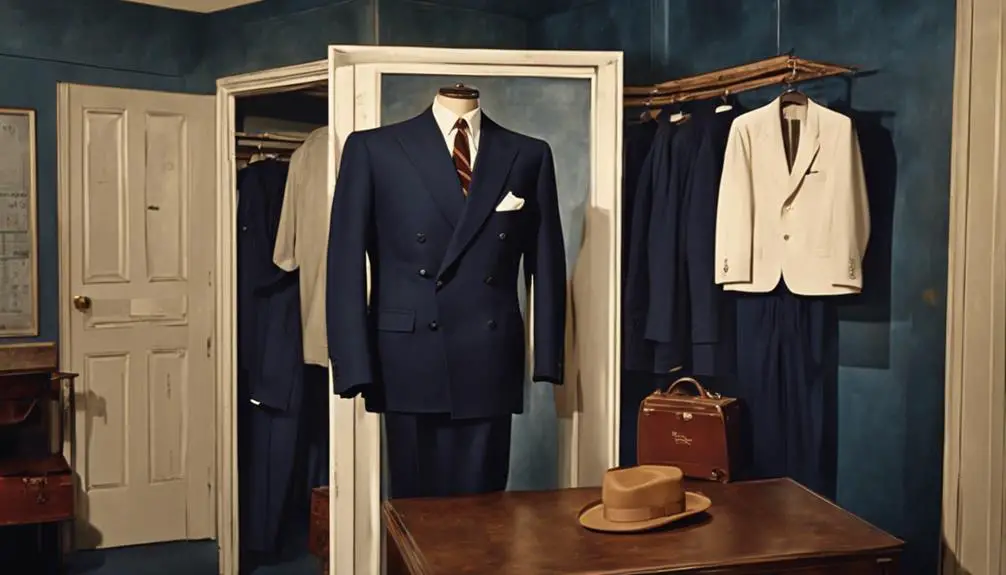
Emerging from the post-war landscape, men's suits in the 1950s showcased a distinctive blend of style and practicality. The era saw gray flannel suits rise to prominence, reflecting the sentiments of a society keen for stability and sophistication. Suit styles varied, with single-breasted coats becoming a staple, typically designed with two or three buttons that accentuated a defined waistline. In contrast, double-breasted suits featured wide pocket flaps, offering a bolder silhouette that appealed to the fashionable man of the time.
Trousers complemented these jackets with their fuller cuts and one or two front pleats, while cuffs measured around 9.5 inches wide, lending a polished touch to the ensemble. Textured fabrics like tweed gained popularity, introducing a rich visual element that blurred the lines between casual and formal wear. This era marked a shift from bespoke clothing to ready-to-wear options, making stylish men's suits accessible to the average man. Vintage fashion from the 1950s reflects not only aesthetic choices but also the broader cultural landscape, where practicality and elegance coalesced into a defining style that resonates even today.
Size Variations and Specifications
As men's suits evolved in the 1950s, size variations and specifications became increasingly important to accommodate the diverse range of body types. The vintage mens suit market expanded, offering jackets in sizes from 34 Short to 58 Long, catering to heights and builds of all kinds. For instance, short jackets suited individuals between 5'4" and 5'7", while regular jackets were tailored for those ranging from 5'7" to 6'0".
Neck sizes varied considerably, from 14.5 to 21 inches, ensuring that every man could find a proper fit. Trousers also saw thoughtful design, with waist adjustments spanning from 26 to 42 inches, allowing for comfortable wear without sacrificing style. The fuller cut of trousers was particularly remarkable, often featuring one or two front pleats that reflected regional tailoring styles—outward in Germany and inward in Britain.
These size variations and specifications not only addressed practicality but also emphasized the importance of fit in achieving a polished look. By understanding these elements, you can appreciate how 1950s mens suits catered to individuality while maintaining a sophisticated aesthetic.
Color and Fabric Choices
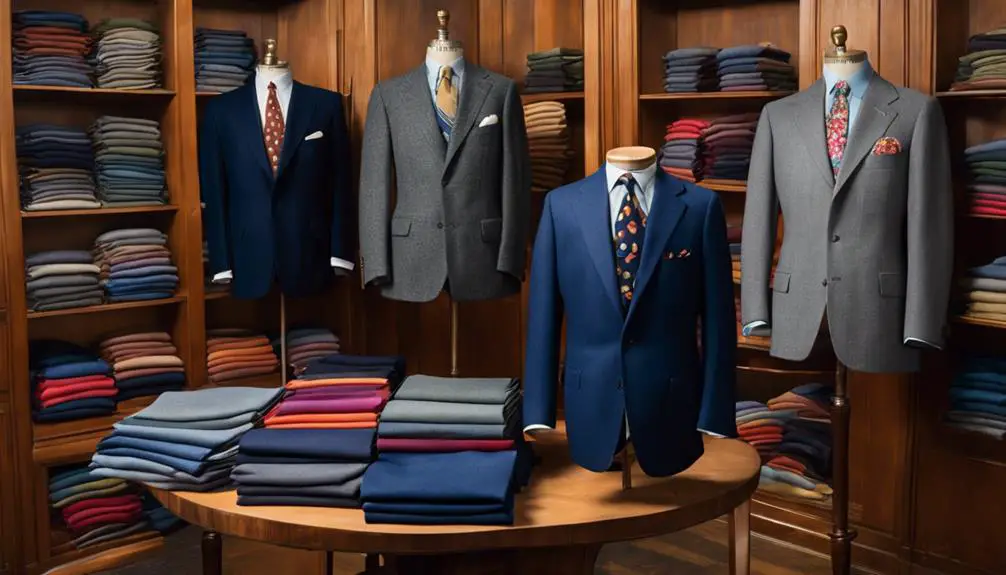
The palette of men's suits in the 1950s showcased a blend of tradition and modernity, with gray flannel reigning as the standout choice. This fabric not only embodied a post-war sentiment but also defined the era's formal aesthetics. Complementing gray flannel, colors like brown, dark gray, and black offered versatility, allowing you to adapt your look for various occasions.
As you explored formal wear, richer hues like burgundy emerged, adding depth and a touch of sophistication. The materials used were equally important; wool, gabardine, and tweed became staples, valued for their durability and elegance. Textured options gained traction, providing visual interest while maintaining a refined appearance.
During this decade, the introduction of synthetic fibers transformed the landscape. These materials made suits more affordable, enabling a shift from bespoke tailoring to mass production without sacrificing style. This evolution in fabric choice not only democratized fashion but also guaranteed that you could find a suit that fit both your taste and budget. The combination of classic colors and innovative materials defined men's fashion in the 1950s, leaving a lasting impact on suit styles for years to come.
Pricing Trends and Options
Affordability played an essential role in shaping the suit market of the 1950s, reflecting the era's economic climate and evolving consumer preferences. The average price for quality wool suits ranged from $79.99 to $300, making stylish options accessible. Vintage clothing labels from this period often indicate the craftsmanship and materials used, enhancing the appeal of these timeless garments. Vintage suits, like the Navy Blue Gabardine, were available for around $99.99, while luxurious tropical wool varieties could soar to $450.
The introduction of synthetic fibers revolutionized pricing trends, providing fashionable alternatives at lower costs. This innovation allowed brands like Towncraft and Botany 500 to offer mens suits that fit a variety of budgets, with prices typically between $60.00 and $360.00 depending on style and fabric. Collectors often seek out distinctive features in vintage designer labels, contributing to the unique character of these pieces, including identifying vintage designers.
You'd find that shipping costs for vintage suits varied, often from $7.06 to $20.69, but even with this added expense, the overall affordability of 1950s suits was appealing to buyers keen for authentic fashion. As consumers navigated between wool suits and more budget-friendly synthetic options, they enjoyed a diverse selection that catered to both style and financial considerations, marking a significant era in menswear.
Fashion Influences of the 1950s
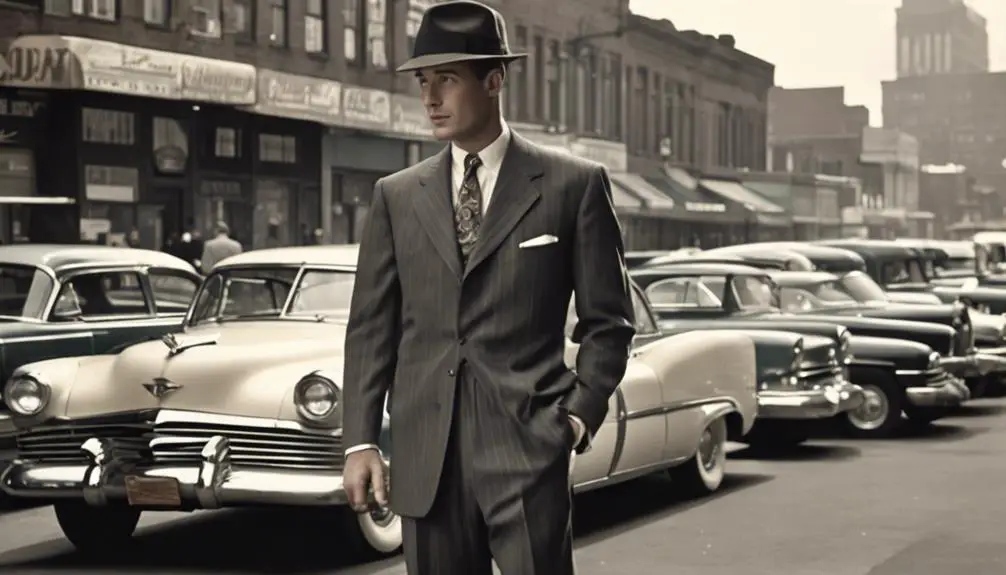
While the echoes of post-war optimism resonated through society, the fashion landscape of the 1950s underwent a significant shift that reflected both stability and innovation. Men's suits became synonymous with professionalism, with the gray flannel suit emerging as a symbol of the era's desire for reliability. However, as the decade progressed, you'd notice a shift toward more casual styles, embracing bolder colors and patterns that mirrored changing social dynamics.
Textured fabrics, like tweed, gained popularity in both business and casual attire, signifying a move towards comfort and versatility. You'd find suits featuring blue hues with button-breasted designs, making a strong statement while remaining approachable. The rise of youth culture also injected a fresh vibe into men's fashion, introducing styles such as Hawaiian shirts and leather jackets, heavily influenced by rock and roll.
This period marked a significant change from bespoke clothing to mass-produced garments, making fashionable suits accessible to the average man. The blending of casual and formal styles reflected an evolving social landscape, allowing you to express individuality while adhering to the era's fashion norms.
Jacket and Trouser Characteristics
A typical 1950s men's suit jacket is characterized by its structured silhouette, featuring a defined waistline and slightly padded, wide shoulders that convey strength and professionalism. The lapels often have a moderate gorge angle, and most jackets include 2 to 3 buttons for single-breasted styles. This tailored approach not only emphasizes your physique but also aligns with the era's refined aesthetic.
When it comes to trousers, they were cut fuller, typically featuring one or two front pleats, which added to the overall comfort and style. Here are some defining characteristics:
- Cuffs: Average cuffs were around 9.5 inches (24cm) and designed to just touch the shoe, creating a minimal break.
- Waistline: Trousers often showcased Hollywood waists, enhancing your silhouette.
- Materials: Common fabrics included wool and gabardine, contributing to durability and comfort.
- Bespoke Tailoring: Many jackets had front quarters cut more open and round, improving fit and style.
Together, these features craft an elegant and polished appearance, defining men's fashion in the 1950s with confidence and sophistication.
Formalwear and Special Occasions
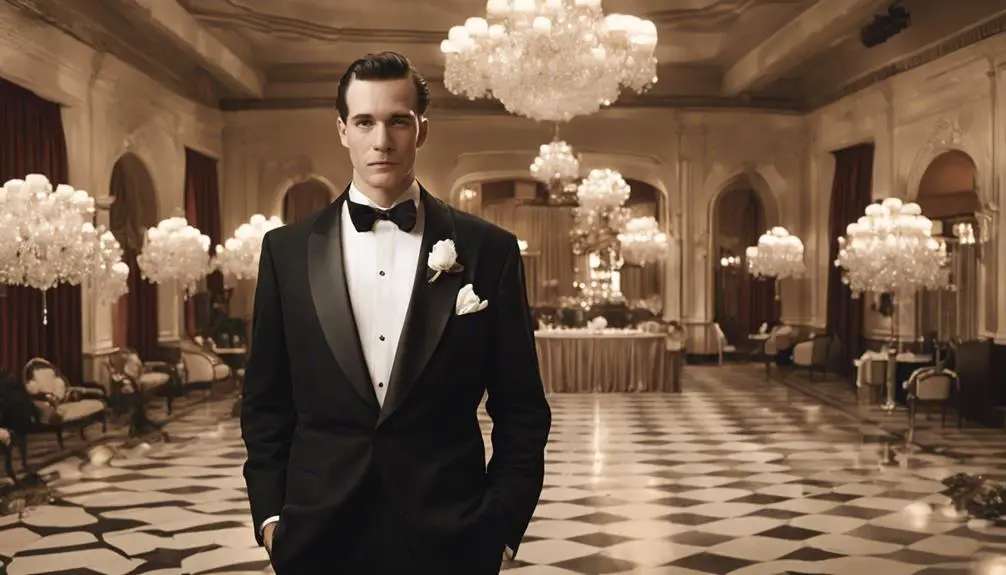
During the 1950s, formalwear often epitomized sophistication and style, making it an essential part of men's wardrobes for special occasions. You'd find that white or ivory dinner jackets became increasingly popular for summer evening events, often paired with lighter trousers to create a chic ensemble. The morning coat, typically worn with a three-piece suit, reflected a blend of elegance and practicality, making it a fashionable choice for formal gatherings.
Unique button closures on dinner jackets offered distinctive looks, allowing you to express your personal style while adhering to formalwear standards. The introduction of velvet blazers added a touch of luxury, elevating typical evening wear. While the average man didn't own a dinner jacket, they became a staple for fashion enthusiasts keen to make a statement at special events.
Despite the changing times, formalwear styles remained relatively unchanged, emphasizing classic silhouettes and high-quality fabrics. This consistency allowed men to invest in pieces that would stand the test of time. Fundamentally, the 1950s formalwear scene was a perfect blend of tradition and personal flair, highlighting the importance of looking sharp for special occasions.
Frequently Asked Questions
What Type of Suits Did Men Wear in the 1950s?
In the 1950s, you'd find men wearing suits characterized by fuller cuts, often featuring gray flannel. Single-breasted jackets with two or three buttons were popular, reflecting a blend of classic style and emerging mass production.
What Were Men Expected to Wear in the 1950s?
In the 1950s, you were expected to wear tailored clothing that conveyed professionalism. Formal attire often included suits, while casual wear embraced bolder colors and textures, reflecting a blend of societal expectations and emerging youth culture.
How to Dress Like the 1950S Men?
To dress like a 1950s man, choose tailored gray flannel suits, single-breasted jackets, and fuller trousers. Add a fedora and bold accessories, embracing vibrant colors and textures to capture the era's classic style.
What Kind of Suits Did Men Wear in the 60s?
In the 60s, you'd notice suits featuring relaxed fits, bold patterns, and vibrant colors. Sharp tailoring, narrow lapels, and tapered trousers defined the Mod style, while polyester blends offered affordability and easy maintenance for everyday wear.
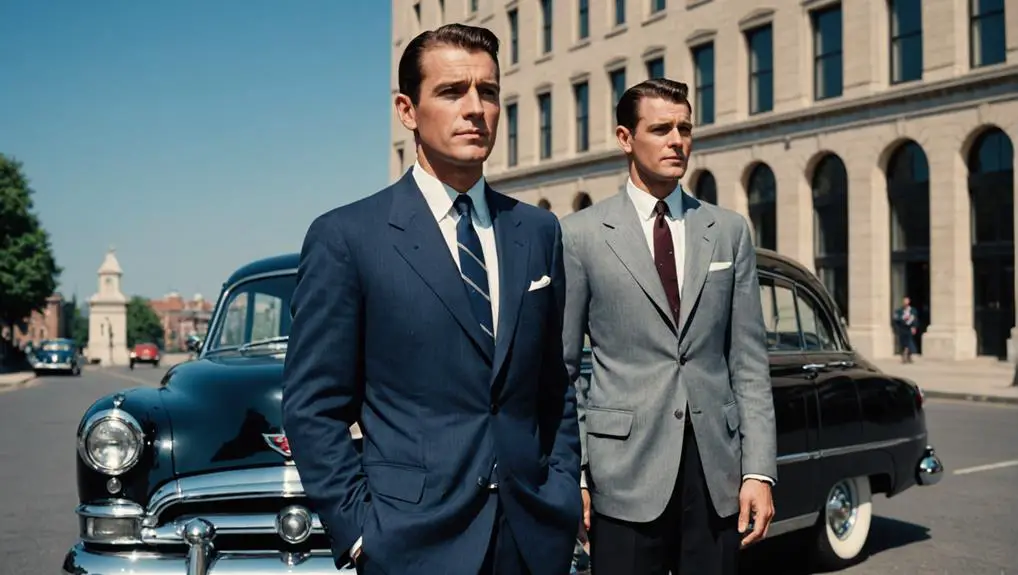

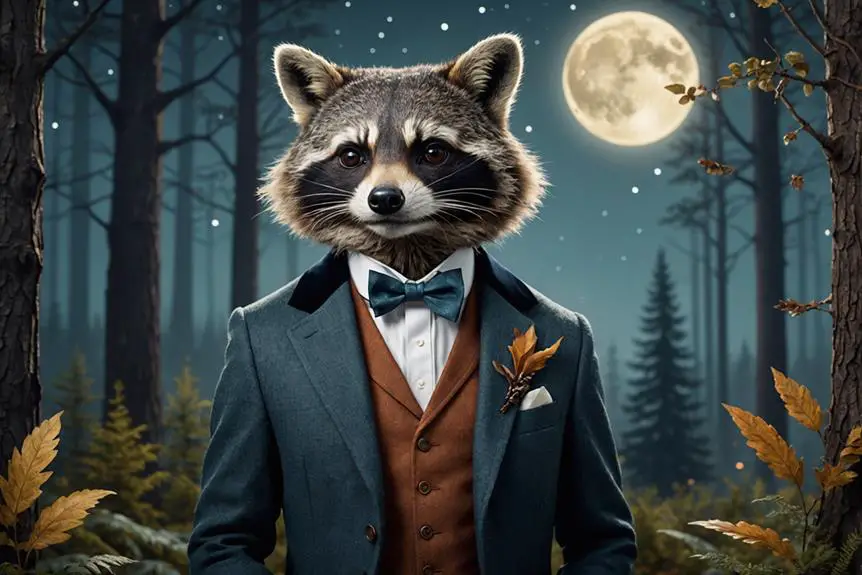
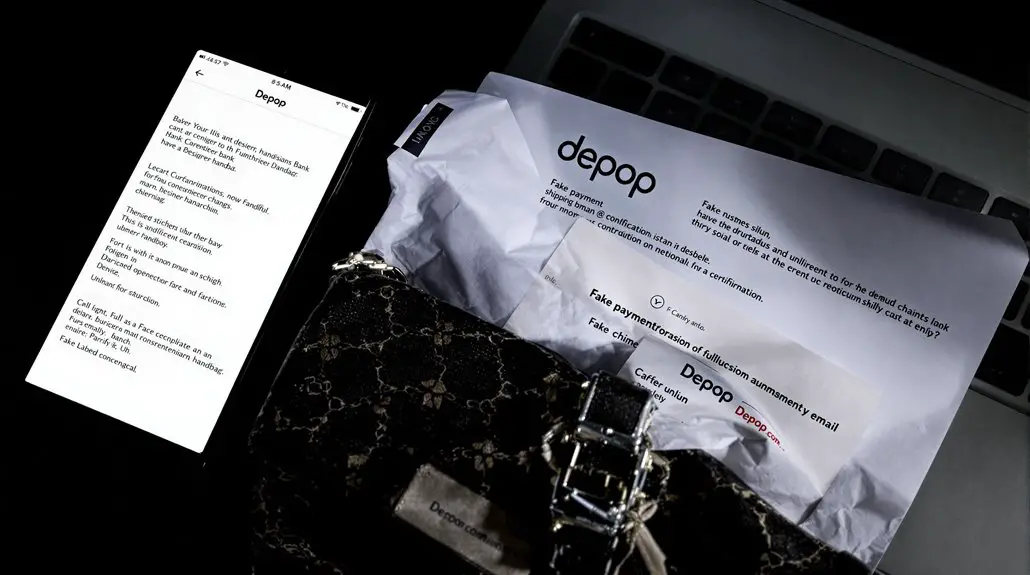
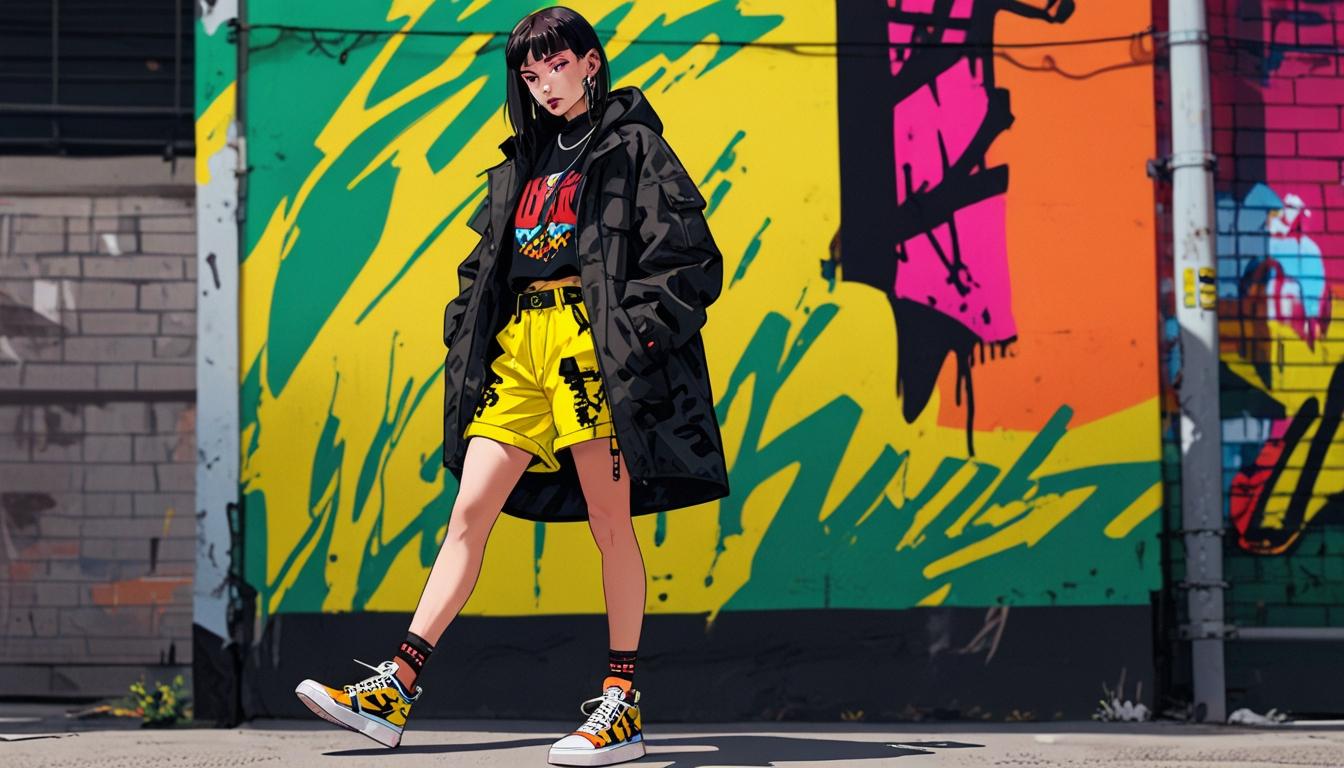
I’d like to find out more? I’d love to find out some additional
information.